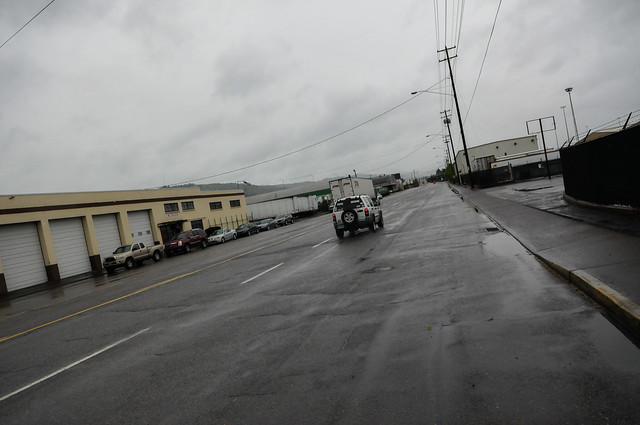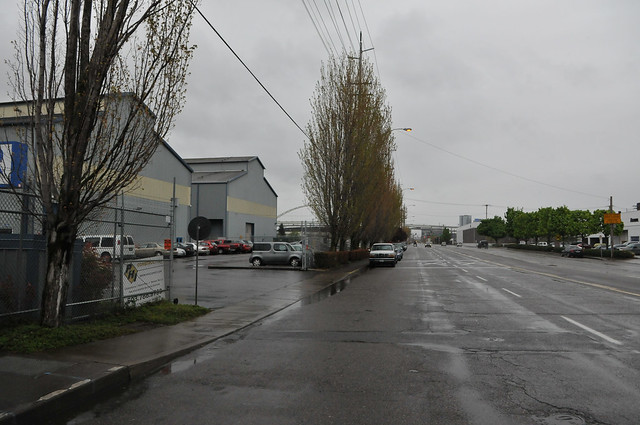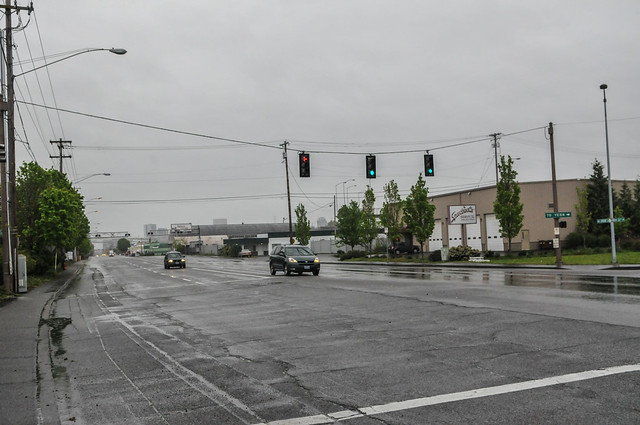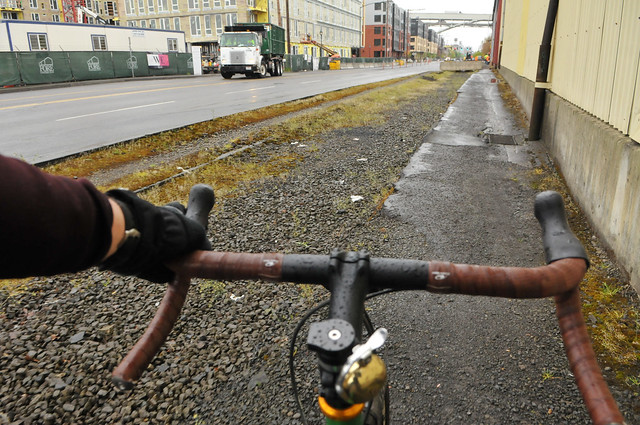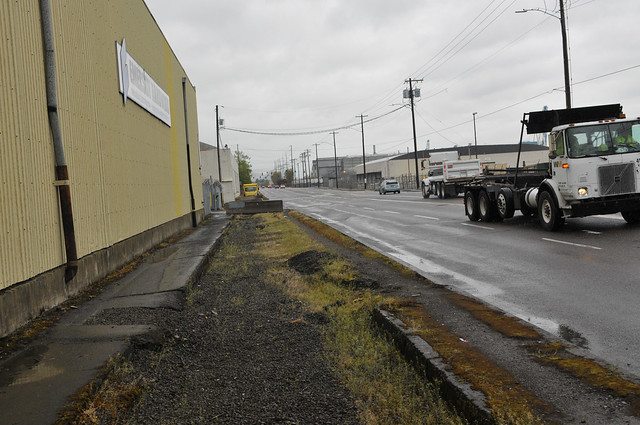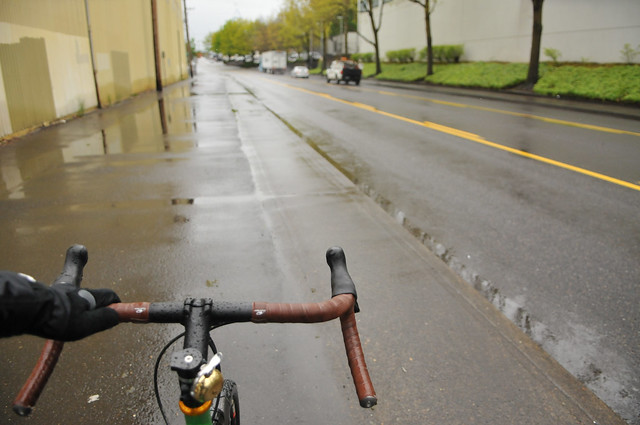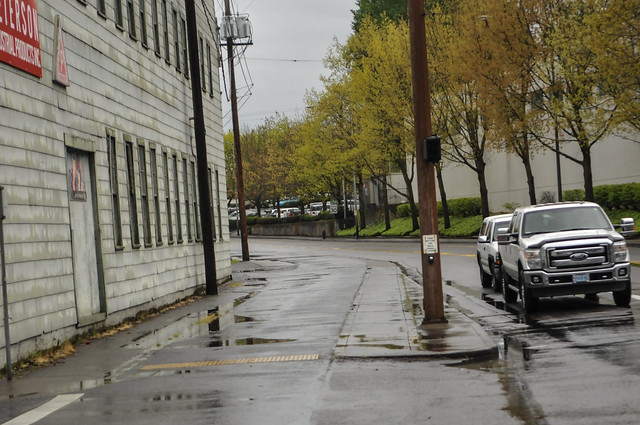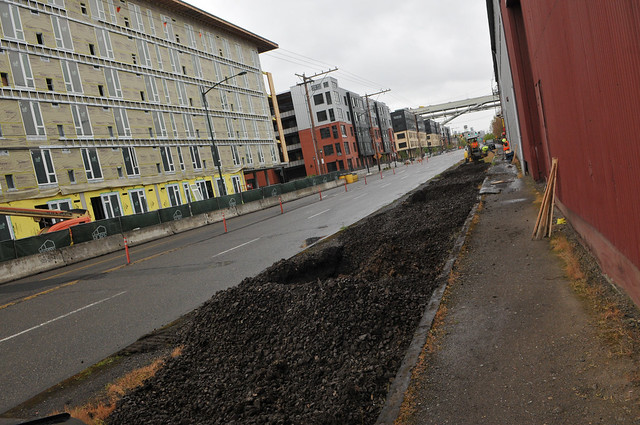
(Photos: J. Maus/BikePortland)
Part of NW Portland Week.
I’m not going to sugarcoat it: riding a bike in the Northwest Industrial District is not for the faint of heart. I enjoy it only in an Escape-from-New-York-get-my-adrenaline-pumping-urban-assault kind of way. But if you stop and look and allow yourself to dream you can see vast potential.
The wide streets — some of which are 80-90 feet across — could be transformed into world-class multi-modal thoroughfares where people are able to walk, bike, and take transit safely and efficiently alongside people driving cars and trucks.
Before I share some photos and thoughts from my ride out there this morning, check out the map below to get an idea of the area we’ll be talking about:
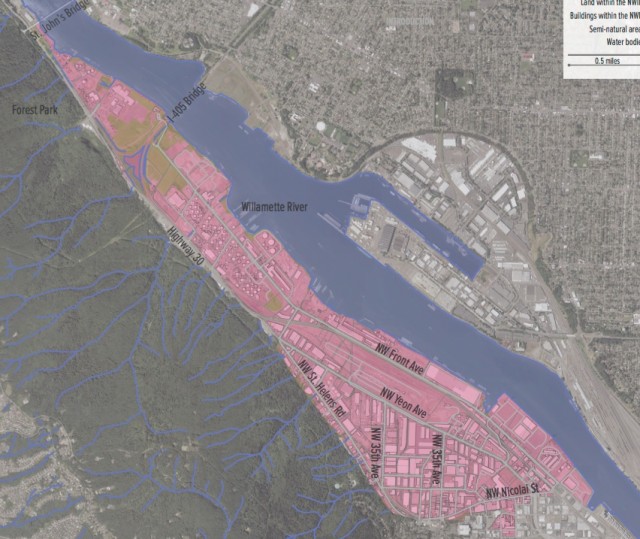
This part of Portland hosts a diverse range of jobs. The 1,700 acres accounted for nearly 16,000 jobs in 2002 (via City of Portland Bureau of Planning report, PDF). Since then some of the major manufacturing jobs in the steel and wood products industries have gone away but there are newer jobs in the district thanks to companies like Powell’s Books (who operates their main warehouse in the district), King Cycle Group (Chris King Precision Components and Cielo Cycles, run out of a former Folger’s Coffee warehouse), Schoolhouse Electric Supply, and many others.
There are hundreds of business located in the northwest industrial area. It’s a shame we haven’t made it a nicer place to bike in. Given its proximity to the central city, major freeways, Union Station, and public transit hubs, there could be a lot more people bicycling to and from all those jobs.
Rolling out on NW Front Avenue this morning I was struck at how wide the roadway is. I’d guess it’s between 80 and 90-feet wide for the entire two miles or so between the Broadway Bridge and NW 26th.
Advertisement
There’s a strong case to be made for protected bikeways and even grade-separated cycling paths on Front. Not only is there room in the roadway, but there are also miles of abandoned rails that run directly adjacent to it.
Imagine a few park-and-ride lots near freeways just outside the central city core with great bike parking, bike share stations, and public transit lines radiating out on the major Northwest Industrial District streets like Front, NW Yeon, NW Nicolai, NW 29th, Highway 30, and so on.
According to a 2015 Portland State University Masters in Urban Planning student report, Getting Green to Work in the Northwest Industrial District, 46 percent of workers in this industrial area live within 10 miles of their job.
If you think building cycle tracks in this industrial sanctuary is a crazy idea, you might be interested to know that the City of Portland has already done it. Sort of. You might recall in 2009 when we reported that the Bureau of Transportation seized an opportunity to pave over a stretch of defunct railroad right-of-way on NW Nicolai. They never signed or marked it as a bike path, and you won’t find it on Metro’s Bike There map, but the result is a very smooth stretch of pavement that works perfectly as a bike path.
We could do the same on NW Front.
In that same PSU report published last year, the authors found that,
“Generally, streets in a Freight District should serve trucks first, except where high demand for bicycle and pedestrian access exists… Separation of bicyclists and motor vehicles is preferred… In these areas, bicyclists should not share a lane with motor vehicles, and should instead have separated on-street facilities, such as bike lanes or cycletracks.”
And the report also recommended the removal of old railroad tracks that cross at angles less than 45-degrees. “While decommissioned tracks add character to the industrial district, they also create hazards for cyclists when crossed at small angles because the gap between the track and pavement ‘catches’ bike tires,” the authors wrote.
And if you think the rough-and-tumble workers at many of these industrial warehouse jobs won’t ride bikes, re-read my 2010 report about how workers at a shipyard on Swan Island get around.
Adding protected bikeways on a few key streets and paving over the many other pieces of unused railroad tracks could do wonders for biking in the Northwest Industrial Area. And I haven’t even mentioned the other important bicycle use in this area: people who ride through it on the way to training and fun rides in Forest Park, the West Hills, and other rural destinations to the north.
Do you bike to work in the Northwest Industrial Area? Or perhaps you bike through it on your way to other destinations? If so, we’d love to hear your thoughts.
— Jonathan Maus, (503) 706-8804 – jonathan@bikeportland.org
Our work is supported by subscribers. Please become one today. .



